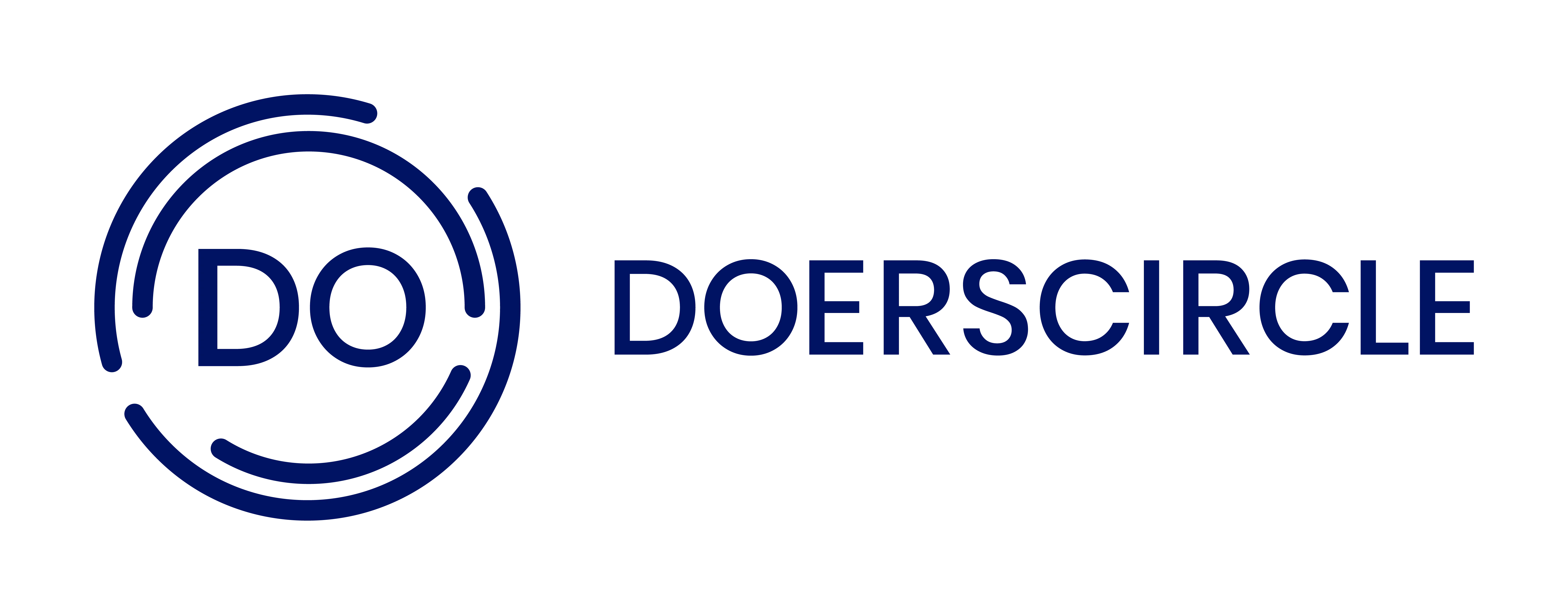
DO Masterclass Minutes - Raven's Way to Making Your Story Stand Out

DO Masterclass Minutes: A summary of the insights and learnings from each class. 🚀
Topic: Storytelling – Making your Story Stand Out
Expert Speaker: Raven Lim, Podcast Consultant & Founder, MeaVox Live
This session included listening to podcast snippets and other videos discussing examples of good storytelling. This article will be more about my experiences with storytelling and Raven’s process to become a good storyteller.
So, without further ado, let’s get into a (summarized) recap of what we learnt in the class.
-----------------------------------------------------------
The best content always tells a story.
Read that again.
Now try to recollect your favorite or the most memorable piece of content you have ever watched.
Was it an ad you saw on tv randomly?
Was it a podcast you listened to while taking a walk?
Was it a poster you saw on the train?
Whatever it was, why did your mind go to that piece of content the moment you were asked to pick a favorite one?
Is it because the content was scenic, or emotional, or used techniques that made it memorable?
It is highly likely that regardless of however the content was created, it used formats and techniques behind every good story.
According to Raven, we can view storytelling and creating one in a few umbrella steps.
- What is your brand story?
- How do you create one?
- How do you present the story you have created?
So, let’s see what each step entails.
What is Your Brand Story?
This step essentially discusses what makes your business what it is. It revolves around the motivations of how your brand began and what was the inspiration behind doing the work that you do. It can range from numerous passions, whether it is sustainability or financial independence. As long as the brand story is attached to your passion and helps you forge connections, it will be memorable.
Remember to answer the following questions when you create a brand story in your head:
- What drives you / your business to do the work?
- Does the story make the audience develop empathy for you?
- Does the story make the audience connect with your “Why”?
- Will this story build brand loyalty?
You have to make sure points 1 and 3 work in tandem, where whatever you put out there, the viewers/listeners/consumers of content can feel what you feel. As entrepreneurs, you are bound to be close to the cause you are working towards, however, the audience needs to see it and feel it too. Not that it needs to be overtly emotional (sad, to be specific), however, the content should evoke some emotions in your audience, whether it is heartache, happiness, or humor. For instance, using trending music and dancing that makes audiences groove with you can help sell new technological products, which brands like “boAt”, successfully do. On the other hand, utilizing pathos and making the audience emotional may be the way to go, if you’re creating content about your brand indulging in corporate social responsibility. Lastly, you have to think if the content you are creating will be memorable enough to make consumers buy what you are selling in the long run, be it passion or products.
How Do You Create a Brand Story?
Know Your Why
This point should essentially help you understand why your brand exists in the first place. It will help you pinpoint what problem it is that inspired you and what issues are you solving with your product / service. It will include the brand short term missions and how they successfully fulfil your long-term vision. It also includes the values your brand holds and what it stands for, except the main issue it wishes to solve. You must be able to dissect and present your brand’s contribution to the world and its positive impact.
Know What You’re Selling
This is more of a technical point and revolves around what your product/service is. This will include the technical details such as how the physical product is manufactured, or the service is created/provided. It will include basic instructions on how to operate what you’re selling whilst explaining how it all connects back to your “Why.” This point will also touch upon the unique selling point (USP) of your product to give the audience the incentive to buy yours over competing solutions in the market.
Know Your Audience
This point is mainly focused on the audience and consumers you wish to sell your product/service to. Have you done your market research? What do your customers want and what are their needs? You must understand and act on the pain points they discuss whilst constantly improving what you’re providing to solve the issues of the people you target. This will help you create content that will reach more people as well as make those stick around who truly care about the problems you are tackling.
Make it Compelling
Making any story compelling means we need to grab the audience’s attention and retain it until our point is made. To do so effectively, storytellers should focus on the 3 aspects, focusing slightly more on the conflict:
- Status Quo
- Conflict
- Resolution
During the status quo, the audience should receive all the information they require about the characters alongside learning about the brand goals. As for conflict, it is the key to storytelling, according to Raven. Most stories that work have some sort of adversity that is overcome. If not for adversity and challenges, stories would not have anything at stake, with audiences not being involved in how the story ends.
Raven’s golden rule for highlighting Conflict: Don’t try to make your story perfect. Make it personal. If your story is personal, it will connect to the audience despite its flaws because if anything, the flaws will make the story more natural and believable.
How Do You Present the Story You Have Created?
This may be one of the most important aspects of storytelling, according to Raven. Even if you have a good story and you don’t present it correctly, it can lead to no impact being created despite the story having potential.
Presentation of the Story
The story should be divided into 3 parts:
Setup
This is the part that builds interest and suspense in the story. It makes your audience want to listen to the rest of it. Remember to use “Hooks,” “Twists,” to heighten tension but only tease your idea in the set up.
Delivery
Follow through in the delivery and tell your entire story. Use story beats, which are points pf action that occur in a piece of content, as milestones and plot points. Build on the story beats until you reach the climax and resolution.
Climax & Resolution
In the climax, reveal and tackle the suspense you had created earlier (it doesn’t have to be dramatic). Summarize your story in the resolution and give the audience a chance to reminisce and find a “takeaway” or “moral.” This is also the place to encourage any call-to-action like donating, subscribing, joining, amongst other actions your audience should take based on your content and brand.
Don’t Forget to Plan Ahead!
Prepare a script and organize your story before you create it. If it is a podcast, prepare your guest with the questions you plan to ask and rehearse the intros/outros you plan to record. If it is an ad, prepare a storyboard to visualize your end-product and then spend the time to create that. Besides that, distribution is as important (if not more, in some cases) as creation here. Remember to market your content well! Don’t just create an ad and let it sit on your drafts. Post it. Talk about it. Tag influential people so they talk about it too. Make sure to get your content noticed first and be memorable after.
Swaraa’s Favorite Brand Story:
As a storyteller myself, brands creating memorable content makes me very happy. One such piece of content for me is an ad campaign by Samsung India. The video begins with a baby being born in a village in India, with the entire family waiting outside the delivery room. Much to everyone’s chagrin, except the baby’s father, the baby is a girl. As time goes on in the ad, the girl becomes interested in electronics and wants to go to the city to study engineering. The entire family opposes, but the girl’s father helps her go against everyone’s wishes because “he is her son, regardless.” She studies hard and comes back for a family wedding in which there is a huge power cut in her house, embarrassing her family. While everyone is panicking, she goes to the generator, fixes it within a few minutes, and announces that she hopes to open a service center in the village to help everyone. The dad realizes his mistake of calling her “his son,” truly letting everyone know that they should be proud of the fact that she is a talented engineer, instead of judging her based on her gender.
How is it done well?
The setup is beautiful, with all the characters being introduced quickly into the ad whilst the sombre music and visually dark undertones match the patriarchy they are portraying. There is pathos immediately, and it makes the audiences root for the girl in the ad. As the story continues, the delivery shows us the girl studying, with the backgrounds and music becoming lighter in nature. The climax and resolution are a balanced mix of the family members realizing their mistakes and the girl getting the credit and freedom she deserved. Overall, the ad hooks the audiences in the beginning by creating suspense when revealing the baby’s gender and ends on a positive note and call to action of “educating the girl child,” an issue that is prevalent in India
And that’s it for this Masterclass!
Stay tuned for the next one, folks!
About the Expert: Raven Lim is a podcast consultant and manages/launches podcast projects for clients. She began as a freelancer but now has her own firm, MeaVox Live, where she helps other brands create powerful podcasts and tell their stories.
Upcoming DO Masterclass: Increase your Rates 10x as a Freelancer
Expert: Travis Bennett, COO of Doerscircle
Date: 6th April 2023
Time: 4 PM SGT (Singapore Time)
P.S. This is a premium-only masterclass, so go upgrade your account quickly and join us!
#Knowmoretogrowmore










